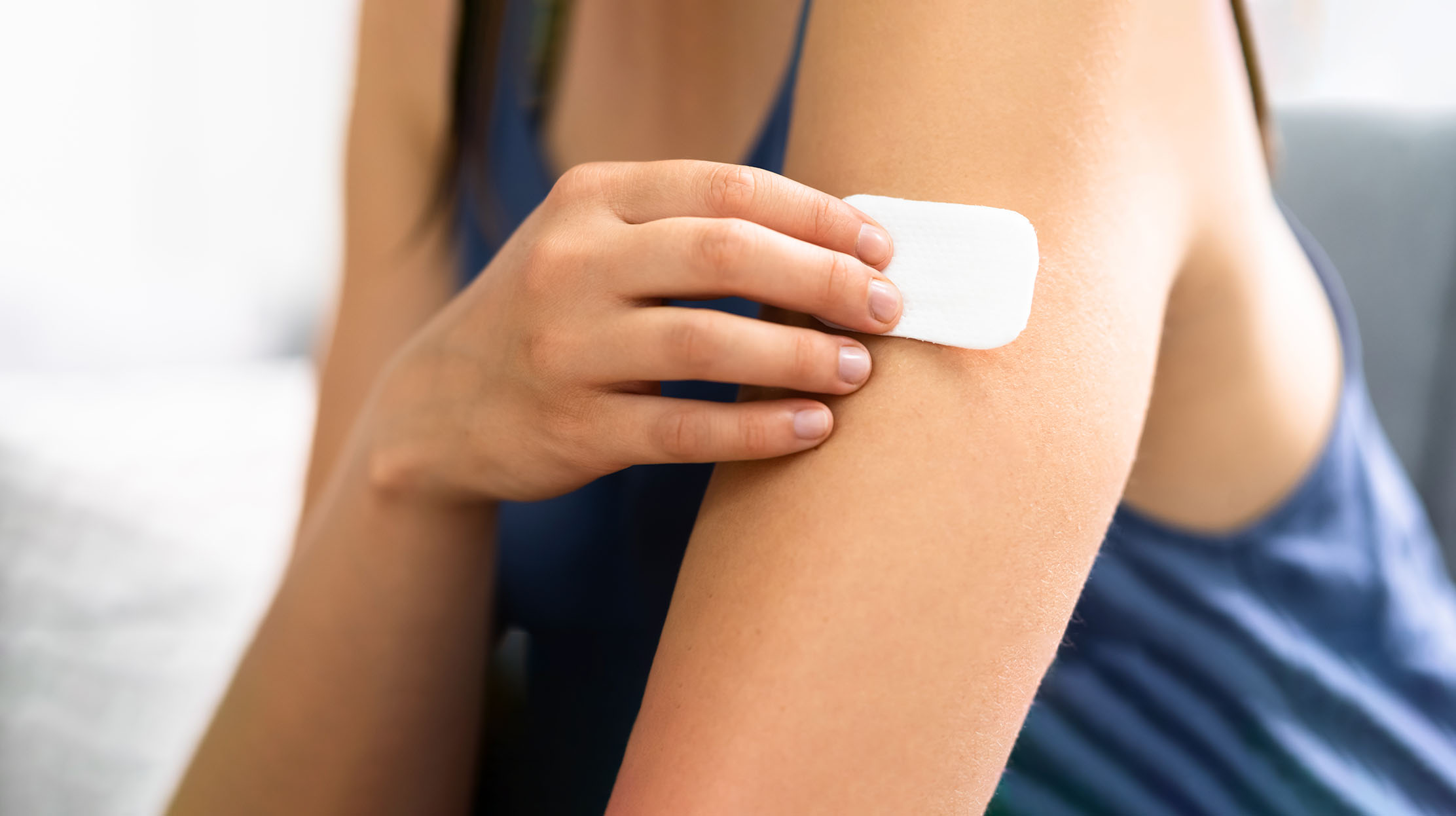The Contraceptive patch (Evra) is similar to a plaster that sticks to your skin. It contains the hormones progesterone and oestrogen which are released into your body through your skin.
The hormones prevent ovulation (the release of an egg); it thickens the cervical mucus and thins the lining of the womb making it difficult for sperm to meet an egg and less likely that a fertilised egg will implant there.
Who can use the contraceptive patch?
If you are thinking of using this as a form of contraception its best that you speak with a doctor or nurse as the patch is not suitable for everyone. They will ask you about your health and your family’s medical history.
The patch may not be suitable for you if:
- you are pregnant or think you may be pregnant
- you are breastfeeding
- you smoke and are 35 or over
- you are 35 or over and stopped smoking less than a year ago
- you are very overweight
- you take certain medicines, such as some antibiotics, St John’s Wort or medicines used to treat epilepsy, tuberculosis (TB) or HIV
You will not be able to use the patch if you have (or have had) any of the following conditions:
- thrombosis (blood clots) in a vein or artery
- a heart problem or a disease affecting your blood circulatory system (including high blood pressure)
- migraine with aura (warning signs)
- breast cancer
- disease of the liver or gallbladder
- diabetes with complications, or diabetes for more than 20 years
You can use the patch at any time in your menstrual cycle. If you put the first patch on during the first five days of your period you will be protected against pregnancy straight away.
If you start the patch after day five of your period you will need to use condoms for the first seven days.
If you have a short menstrual cycle, where you period usually comes every 23 days or less then speak to your doctor or nurse because if you start the patch on the fifth day of your period you may not be immediately protected.
After having baby
You can start to use the patch from 21 days after giving birth. If you start on day 21 you will be protected from pregnancy straight away. If you start after 21 days you will need to use additional contraception for seven days. If you are breastfeeding a baby under six months old a different method of contraception is usually recommended as the patch can reduce your flow of milk.
After a miscarriage or abortion
You can start using the patch immediately after a miscarriage or abortion and you will be protected from pregnancy immediately.
What if I forget to take the patch off and put a new patch on?
This depends on where you are in the four-week patch cycle, and how long you have forgotten to take the patch off or put on a new one.
After week one or two in the cycle
If it has been on for less than 48 hours
Take off the old patch and put on a new one. Continue to use your patch as normal, changing it on your normal change day. You don’t need to use any additional contraception and you are protected against pregnancy.
If it has been on for more than 48 hours longer
You will need to start a whole new four-week patch cycle by applying a new patch as soon as possible. This is the first day of your cycle. Use another method of contraception, such as condoms, for the next seven days. If you had unprotected sex in the previous few days you will need to speak to a doctor or nurse as you may need emergency contraception.
After week three in the cycle
Take the patch off as soon as possible and start your patch-free break. Start a new patch on your usual start day. You will be protected against pregnancy and do not need to use any additional contraception.
If you are more than seven days late in removing your patch you may not be protected against pregnancy. Put on a new patch – this is the beginning of a new patch cycle. You may need to use additional contraception, such as condoms, or use emergency contraception if you have had sex in the previous few days. Seek advice from your doctor or nurse.
After the patch-free week
Put on a new patch as soon as you remember – this is now the beginning of your new four-week patch cycle. If you put the new patch on less than 48 hours late, you will still be protected against pregnancy as long as you wore the patch correctly before the patch-free interval.
If you put the new patch on more than 48 hours late you may not be protected against pregnancy and will need to use additional contraception, such as condoms, for seven days. If you had unprotected sex in the previous few days you will need to speak to a doctor or nurse as you may need emergency contraception.
Know the facts
- When used correctly, the contraceptive patch is over 99% effective in preventing pregnancy
- The patch lasts one week. You change the patch every week for three weeks, then have a week off without a patch
- The patch may not be suitable for women who smoke and who are over 35, or weigh over 90kg or more.
- You can wear the patch in the bath, shower or swimming pool
- It doesn’t protect you against sexually transmitted infections (STIs) so you will need to use condoms as well
Advantages & Disadvantages
The Advantages
- Easy to use and doesn’t interrupt sex
- It can help with premenstrual symptoms (PMS)
- It can help make periods lighter, more regular and less painful
- There are no long term effects to your fertility
- It may reduce the risk of ovarian, womb and bowel cancer
The Disadvantages
- It can cause skin irritation in some women
- It can be seen
- It does not protect you from STIs, so you will need to use condoms as well
- Some women get mild temporary side effects when they first start using the patch such as headaches, nausea, breast tenderness and mood changes
Emergency Support

Free & confidential sexual health services for Black, Asian, and Minority Ethnic communities

Providing advice, support and resources for LGBT people to take control of their sexual health and wellbeing


